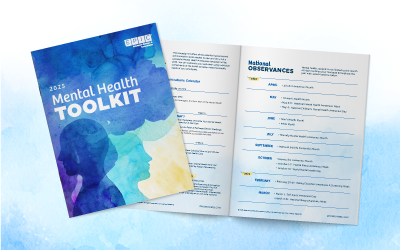Quick Facts
- The IRS recently released final 2020 Forms 1094-C and 1095-C and Instructions for Forms 1094-C and 1095-C (Instructions).
- The IRS also released final Forms 1094-B and 1095-B and related instructions.
- The 2020 forms largely mirror the 2019 versions, but they include a few substantive changes.
- Employers must now complete the previously optional “Plan Start Month” box on Form 1095-C.
- The Instructions and forms include substantial updates affecting employers that offer Individual Coverage Health Reimbursement Arrangements (ICHRA).
- Employers must furnish and file required forms in early 2021.
Overview
Recently, the Internal Revenue Service (IRS) released 2020 forms and instructions for reporting required under Internal Revenue Code (Code) Sections 6055 and 6056.
- Reporting entities, including health insurance carriers and self-insured plan sponsors that are not applicable large employers (ALEs), use Forms 1094-B and 1095-B to report information required under Section 6055.
- ALEs use Forms 1094-C and 1095-C to report information required under Section 6056, as well as information required under Section 6055 for ALEs who sponsor self-insured plans.
Background
The Affordable Care Act (ACA) created reporting requirements under Code Sections 6055 and 6056. Under these rules, certain employers must provide information to the IRS about the health plan coverage they offered (or did not offer) or provided to their employees in the prior calendar year. Each reporting entity must annually file all of the following with the IRS:
- an individual statement (generally Form 1095-C, for employers) for each person who was provided with minimum essential coverage (for providers reporting under Section 6055), or for each full-time employee (for ALEs reporting under Section 6056); and
- a transmittal form (generally Form 1094-C, for employers) for all of the returns filed for a given calendar year.
Key Changes
The 2020 forms are largely similar to the 2019 versions, but they include a number of substantive changes. The most significant changes are the new fields and codes that must be completed and utilized by employers that offer Individual Coverage Health Reimbursement Arrangements (ICHRA).
- “Plan Start Month” box. The “Plan Start Month” box in Part II of Form 1095-C is required to be completed for 2020 reporting. This box was optional in prior years. Employers are required to complete the box by entering the two-digit number (01 through 12) indicating the calendar month during which the plan year begins. The instructions note that if there is no health plan under which coverage is offered to an employee, employers must enter “00.”
- Employee’s Age on January 1. In Part II of Form 1095-C, employers that offer ICHRAs must enter the employee’s age as of the beginning of the calendar year.
- New codes related to offers of ICHRAs. Employers sponsoring ICHRAs must report offers of ICHRA coverage using a new set of ICHRA-related codes on Form 1095-C Part II, Line 14. These codes add to the existing list of codes that employers may use to describe the type of coverage they offered. The additional codes indicate the various types of ICHRA coverage offered by the employer.
Employers offering ICHRAs that intend to furnish Form 1095-B instead of 1095-C must enter a new Code “G” on Form 1095-B, Line 8 to identify the coverage as an ICHRA. - ZIP Code. Employers sponsoring ICHRAs must also disclose an employee’s Zip Code on Form 1095-C if the employer uses the employee’s location to determine affordability. Employers who determine ICHRA under the “work location” safe harbor must report the Zip Code for the employee’s primary site of employment.
- Updated Penalty Amounts. The Instructions include updated penalty amounts for failures to file returns and furnish statements. The adjusted penalty amount is $280 per violation, with an annual maximum of $3,392,000 (up from a maximum of $3,339,000, for 2019).
- Part III moved. Form 1095-C, Part III is now on Page 3 of the form.
Due Dates and Filing Requirements
Reporting entities must furnish individual statements (Form 1095-B or 1095-C, or a substitute form) to all full-time employees as well as any individuals covered under self-insured health plans on or before March 2, 2021 (extended from January 31, 2021). The instructions note that the IRS will grant no additional extensions to furnish individual statements.
Reporting entities must file Form 1094 and Forms 1095 with the IRS by February 28 if filed by paper, and by March 31 if filed electronically. For 2020, paper filings are due by March 1 since February 28 is a Sunday.
Extensions of Time for Filing
In general, reporting entities may receive an automatic 30-day extension of time to file returns with the IRS by submitting Form 8809, Application for Extension of Time to File Information Returns, by the due date of the returns. No signature or explanation is required for the extension. Under certain hardship conditions, reporting entities may apply for an additional 30-day extension. See the instructions on Form 8809 for more information.
According to the IRS, information returns may continue to be filed after the filing deadline (both on paper and electronically). Employers that miss the filing deadline should file their returns as soon as possible.
Electronic Filing with the IRS
Any reporting entity that will file at least 250 Forms 1095-B or 1095-C with the IRS must do so electronically. The 250-or-more requirement applies separately to each type of return and to each type of corrected return. For IRS Forms 1094-C and 1095-C filed electronically, transmitters must use “AIR,” the Affordable Care Act Information Return system.
Additional Resources
The IRS previously released the following materials which provide helpful guidance for employers subject to the reporting rules.
- Q&As on Section 6055 and Q&As on Section 6056; and
- A separate set of Q&As on Employer Reporting using Form 1094-C and Form 1095-C.
Action Steps
- Ensure a thorough understanding of the ACA employer shared responsibility rules and terminology, and the purpose of the forms.
- Review the instructions.
- Prepare with your payroll and reporting providers, designate a project manager, capture data for each month in 2020, review current systems capabilities, and conduct testing.
- Know what codes and options to use in the forms, such as affordability safe harbor codes and coverage indicators.
- If you are filing electronically in-house, be sure to register and follow the steps outlined on the AIR web site.
- If you are part of an ALE group, carefully review the ALE group reporting rules.
EPIC Employee Benefits Compliance Services
For further information on this or any other topics, please contact your EPIC consulting team.
Learn About Our Employee Benefits Compliance Services
EPIC offers this material for general information only. EPIC does not intend this material to be, nor may any person receiving this information construe or rely on this material as, tax or legal advice. The matters addressed in this document and any related discussions or correspondence should be reviewed and discussed with legal counsel prior to acting or relying on these materials.
DOWNLOADABLE RESOURCES
Sign up for our Compliance Matters Newsletter
You’ll receive our monthly newsletter, as well as special compliance alerts and invitations to our compliance webinars
Related Content
Products
Employee Benefits Consulting
Our dedicated benefits team is focused on delivering better outcomes – to both your benefits program and ...
Products
Compliance
We provide comprehensive consulting services and in-depth education regarding the ever-changing employee ...
Products
HR Technology Solutions
From advising startups on how to build a solid Human Resources (HR) infrastructure, to consulting with ...


